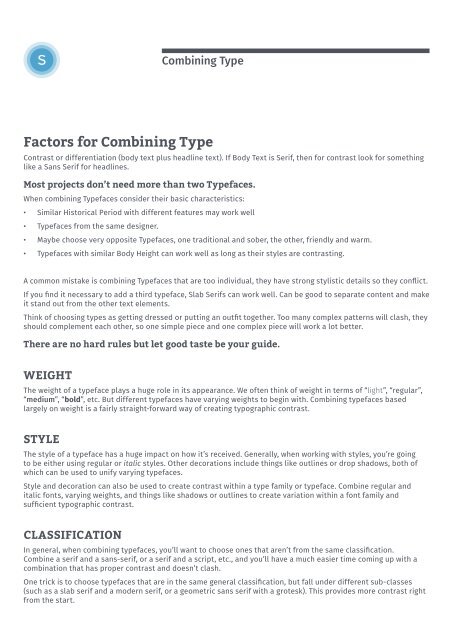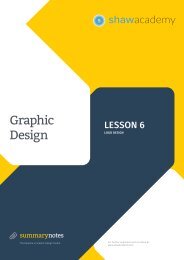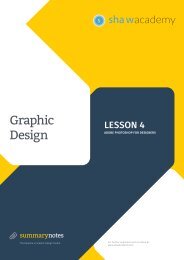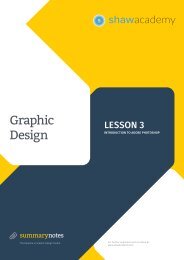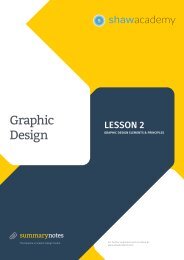You also want an ePaper? Increase the reach of your titles
YUMPU automatically turns print PDFs into web optimized ePapers that Google loves.
S<br />
Combining Type<br />
Factors for Combining Type<br />
Contrast or differentiation (body text plus headline text). If Body Text is Serif, then for contrast look for something<br />
like a Sans Serif for headlines.<br />
Most projects don’t need more than two Typefaces.<br />
When combining Typefaces consider their basic characteristics:<br />
• Similar Historical Period with different features may work well<br />
• Typefaces from the same designer.<br />
• Maybe choose very opposite Typefaces, one traditional and sober, the other, friendly and warm.<br />
• Typefaces with similar Body Height can work well as long as their styles are contrasting.<br />
A common mistake is combining Typefaces that are too individual, they have strong stylistic details so they conflict.<br />
If you find it necessary to add a third typeface, Slab Serifs can work well. Can be good to separate content and make<br />
it stand out from the other text elements.<br />
Think of choosing types as getting dressed or putting an outfit together. Too many complex patterns will clash, they<br />
should complement each other, so one simple piece and one complex piece will work a lot better.<br />
There are no hard rules but let good taste be your guide.<br />
WEIGHT<br />
The weight of a typeface plays a huge role in its appearance. We often think of weight in terms of “light”, “regular”,<br />
“medium”, “bold”, etc. But different typefaces have varying weights to begin with. Combining typefaces based<br />
largely on weight is a fairly straight-forward way of creating typographic contrast.<br />
STYLE<br />
The style of a typeface has a huge impact on how it’s received. Generally, when working with styles, you’re going<br />
to be either using regular or italic styles. Other decorations include things like outlines or drop shadows, both of<br />
which can be used to unify varying typefaces.<br />
Style and decoration can also be used to create contrast within a type family or typeface. Combine regular and<br />
italic fonts, varying weights, and things like shadows or outlines to create variation within a font family and<br />
sufficient typographic contrast.<br />
CLASSIFICATION<br />
In general, when combining typefaces, you’ll want to choose ones that aren’t from the same classification.<br />
Combine a serif and a sans-serif, or a serif and a script, etc., and you’ll have a much easier time coming up with a<br />
combination that has proper contrast and doesn’t clash.<br />
One trick is to choose typefaces that are in the same general classification, but fall under different sub-classes<br />
(such as a slab serif and a modern serif, or a geometric sans serif with a grotesk). This provides more contrast right<br />
from the start.


